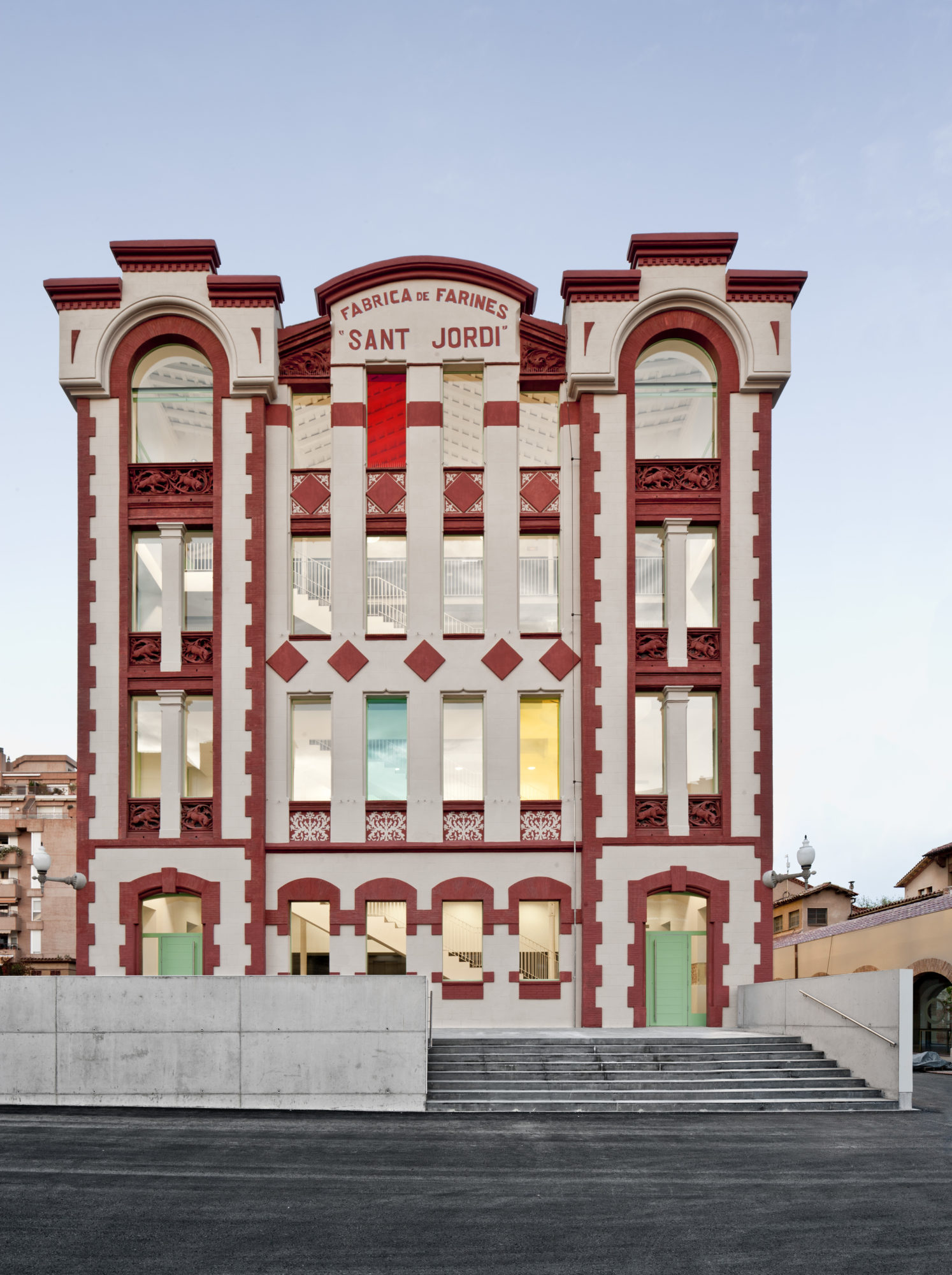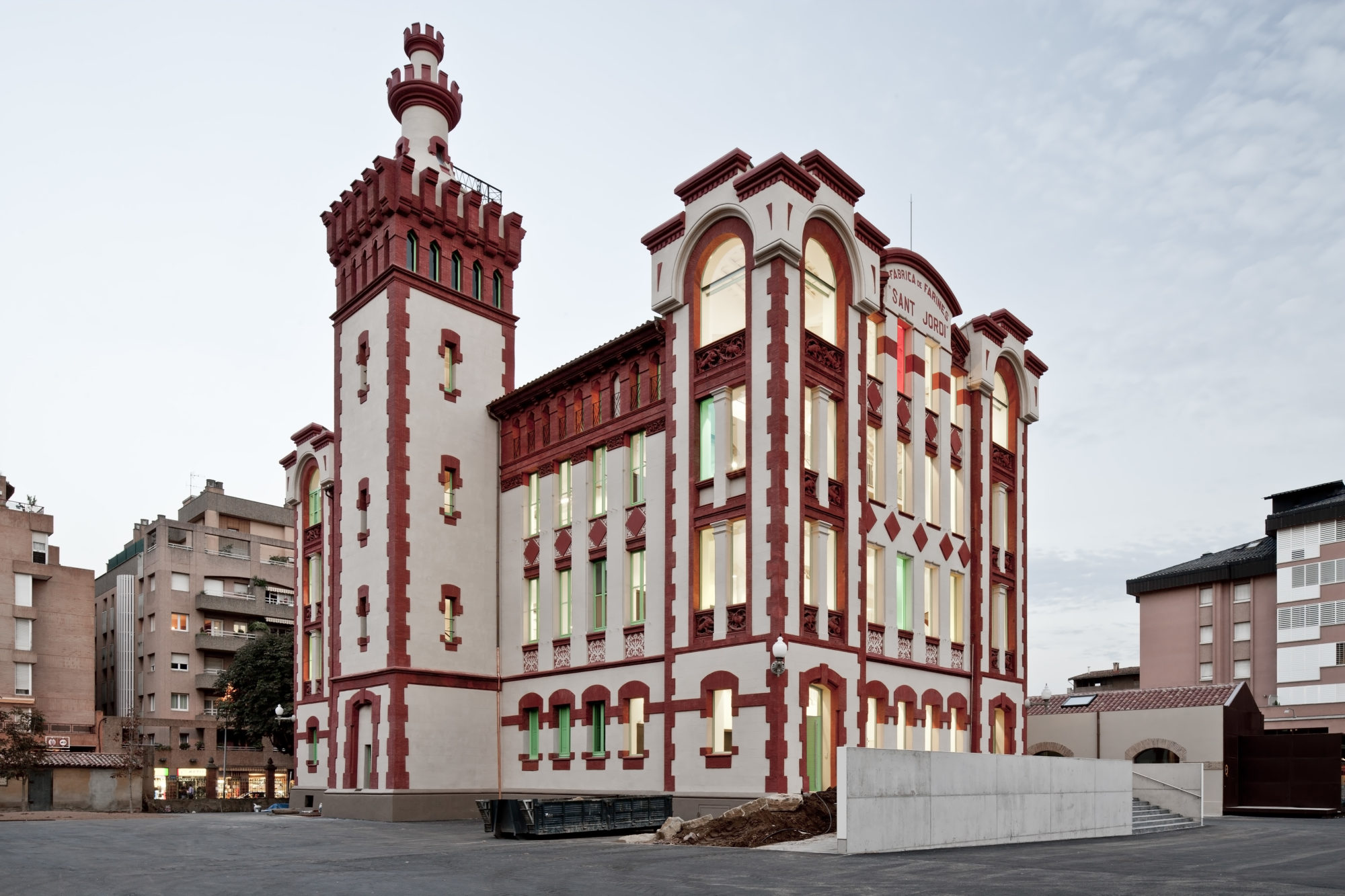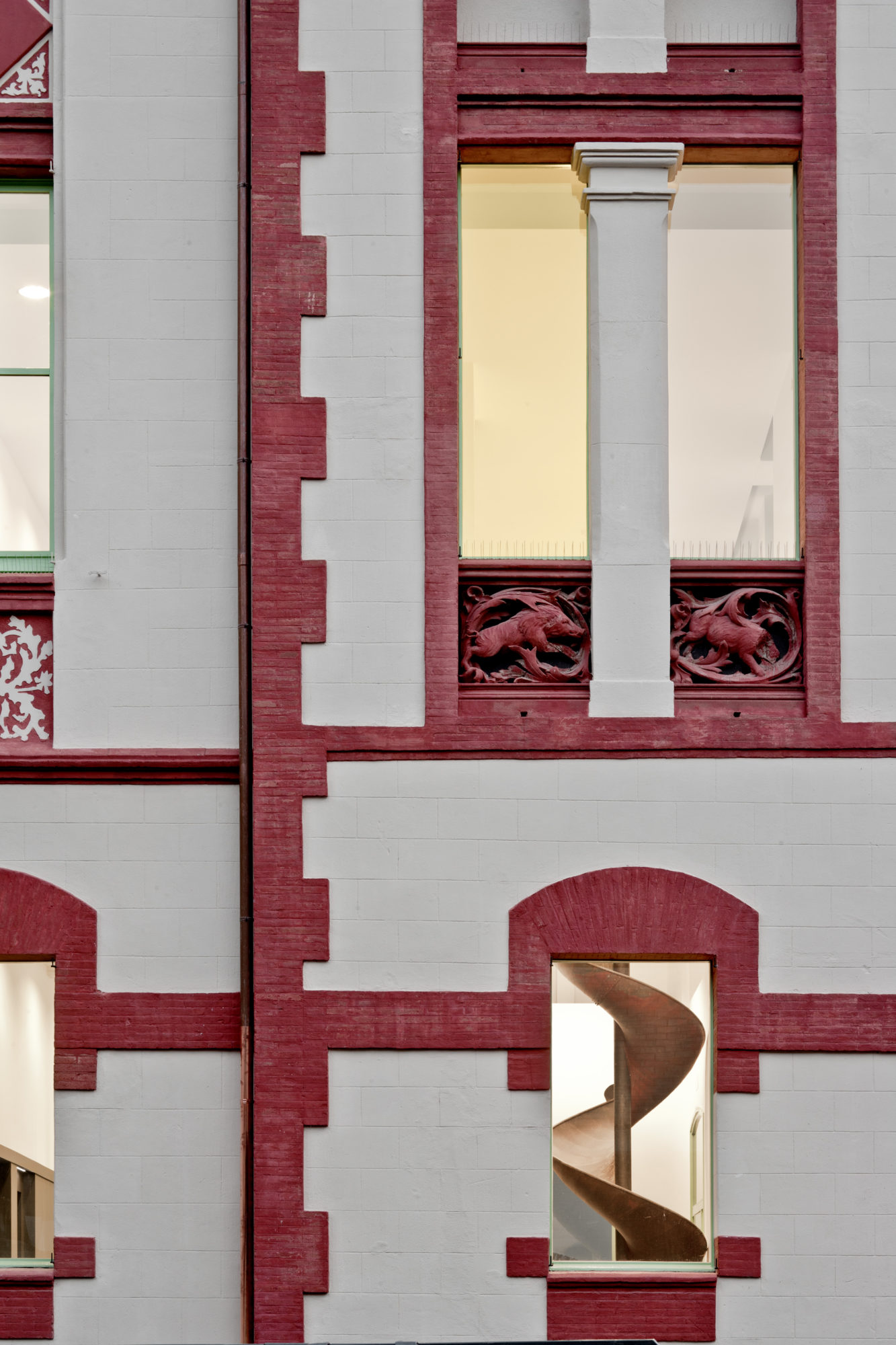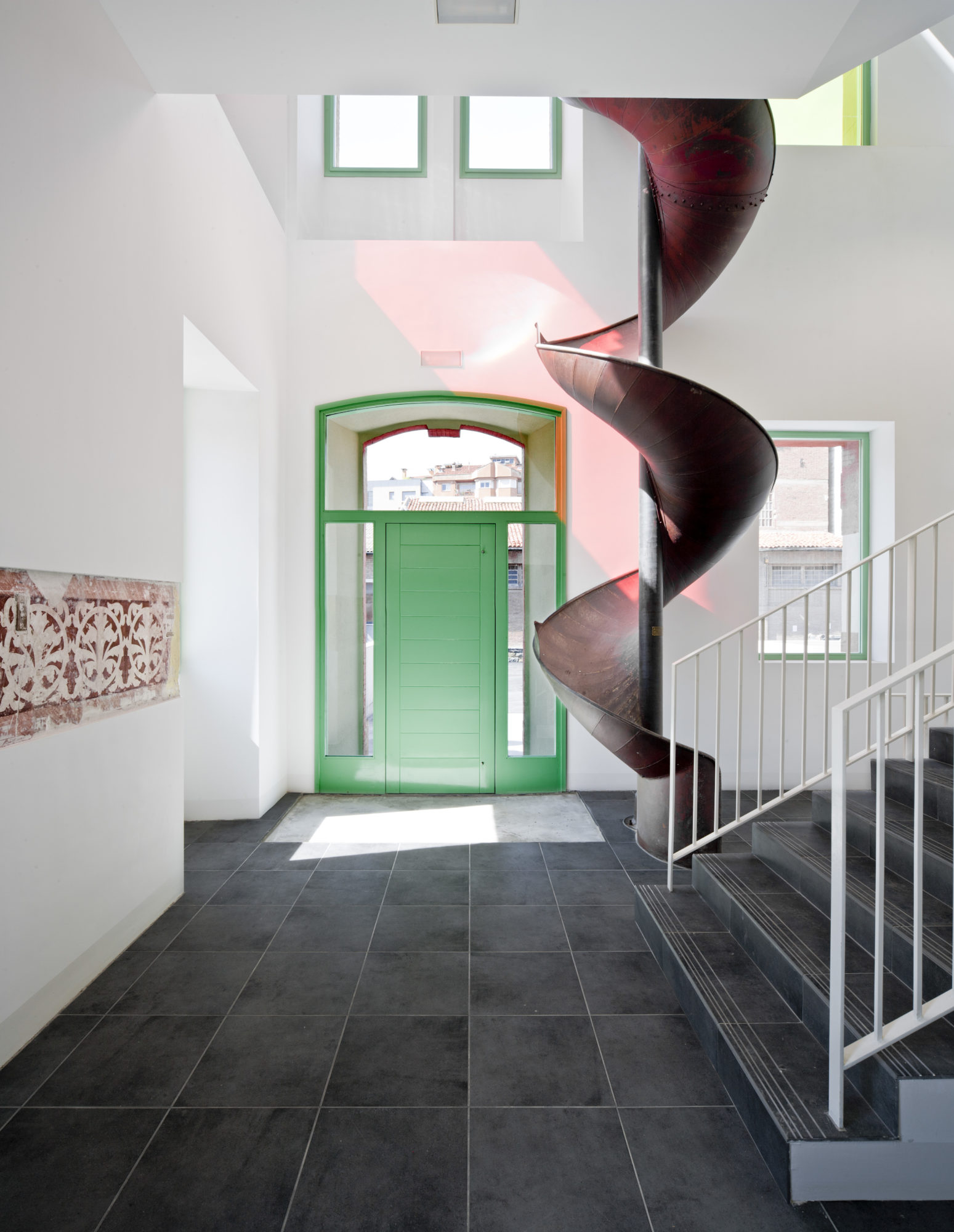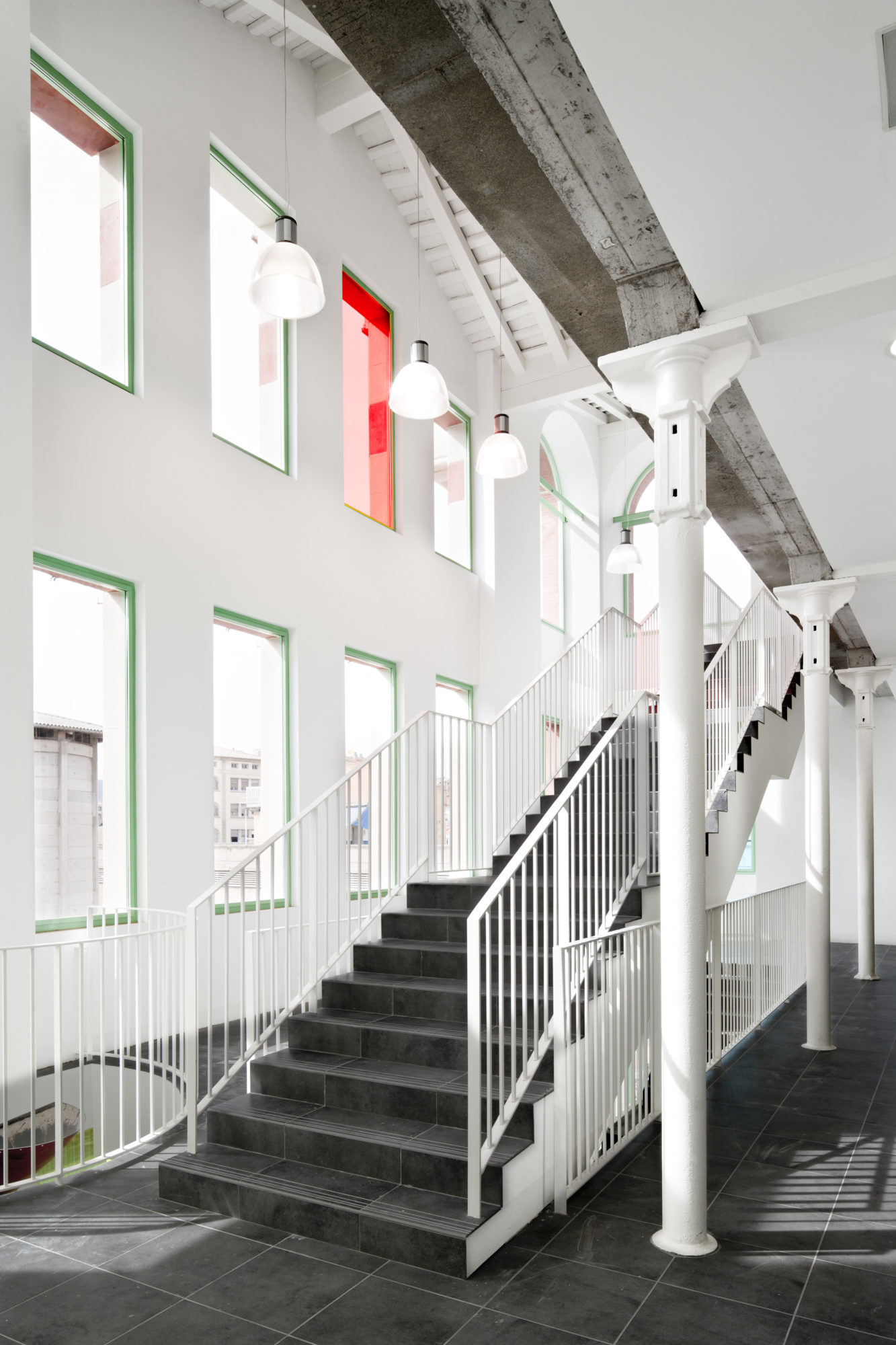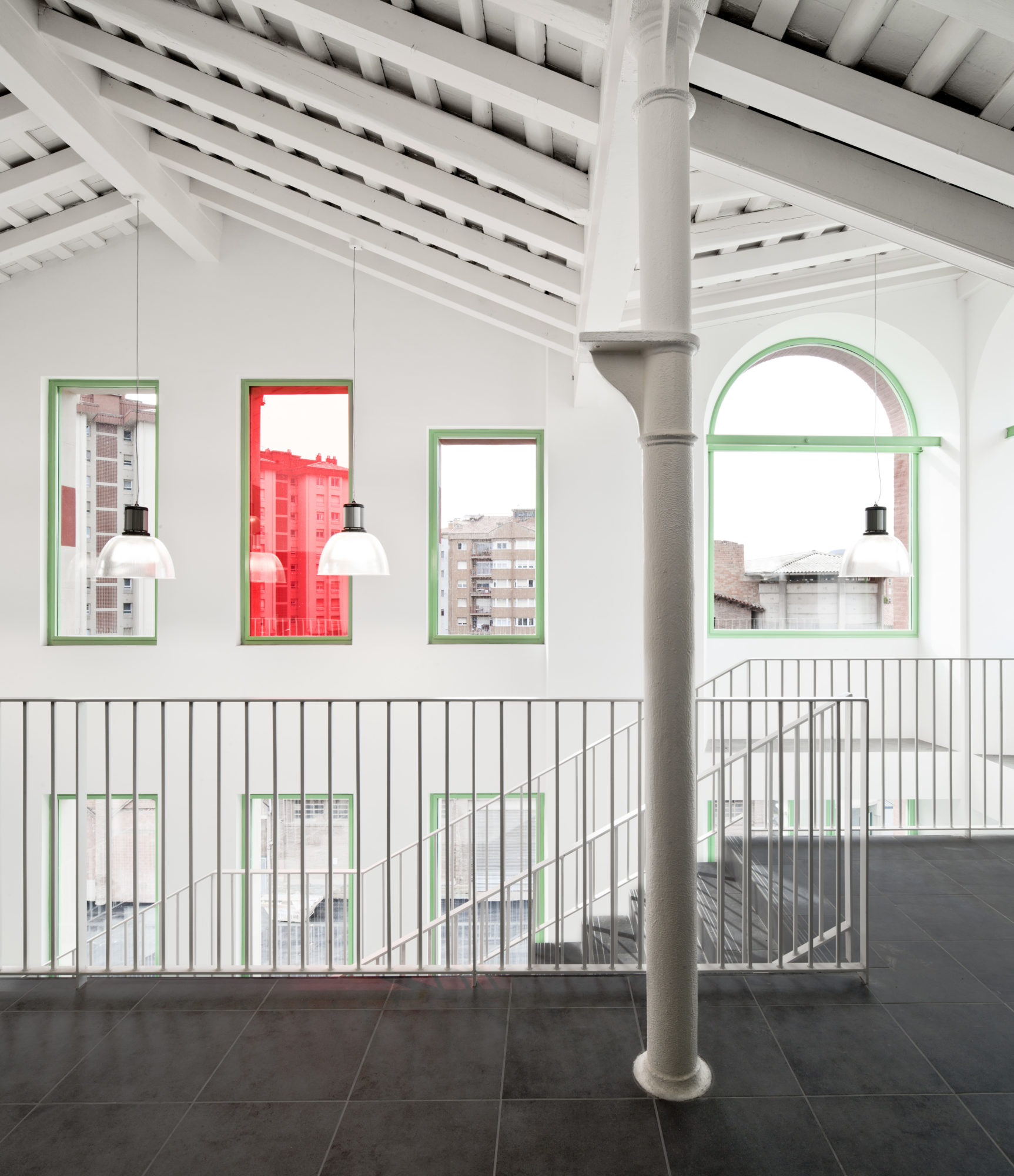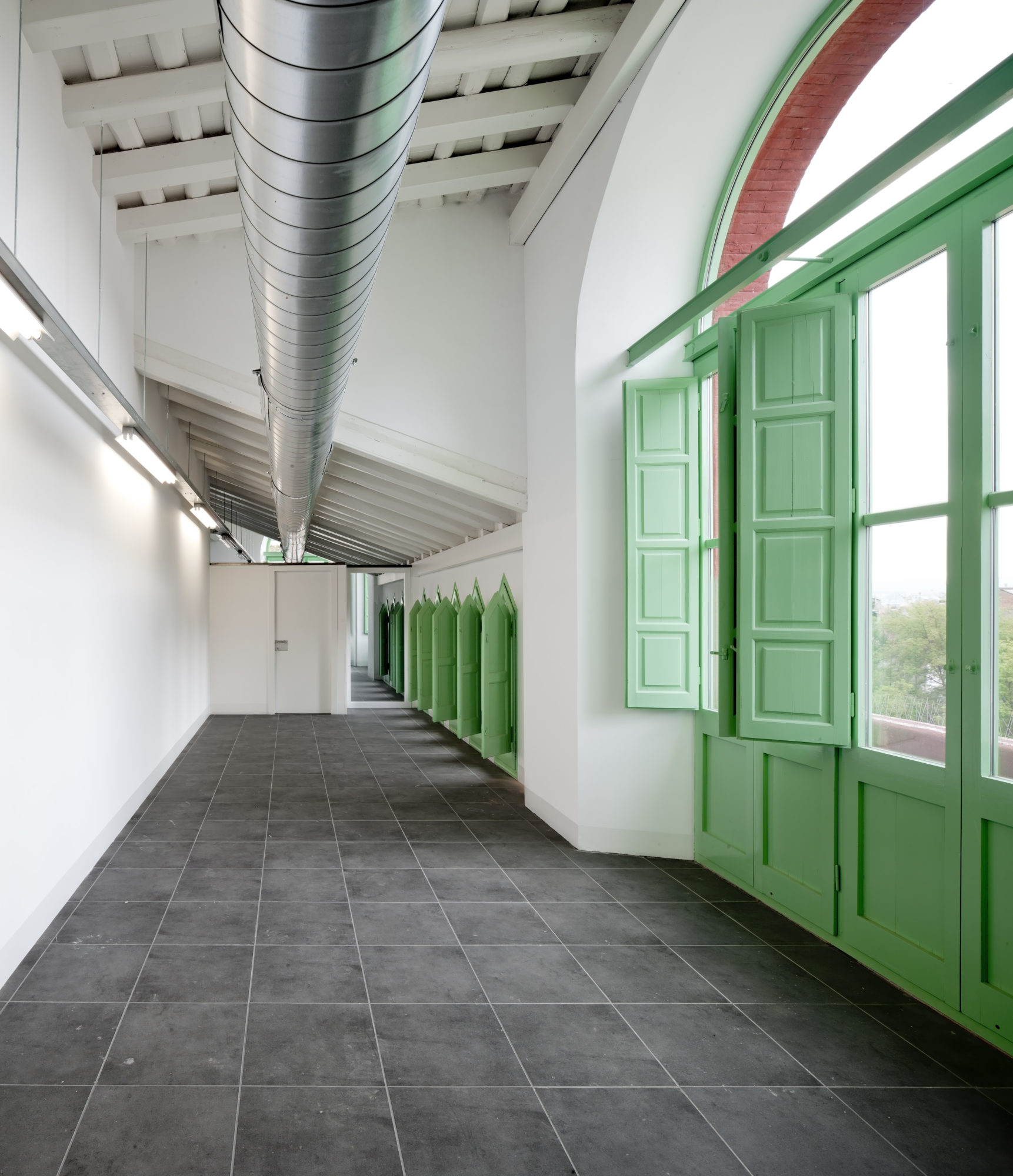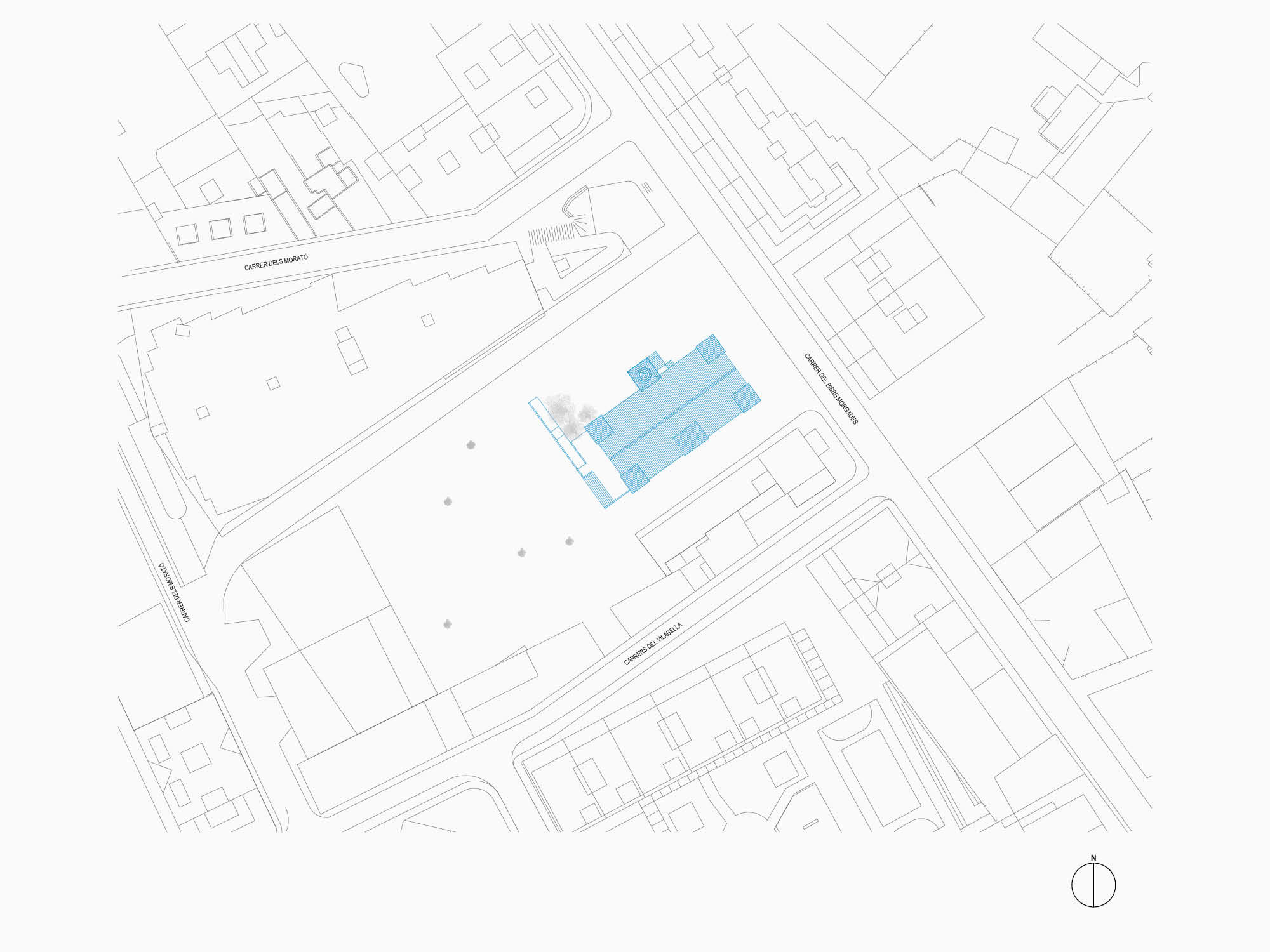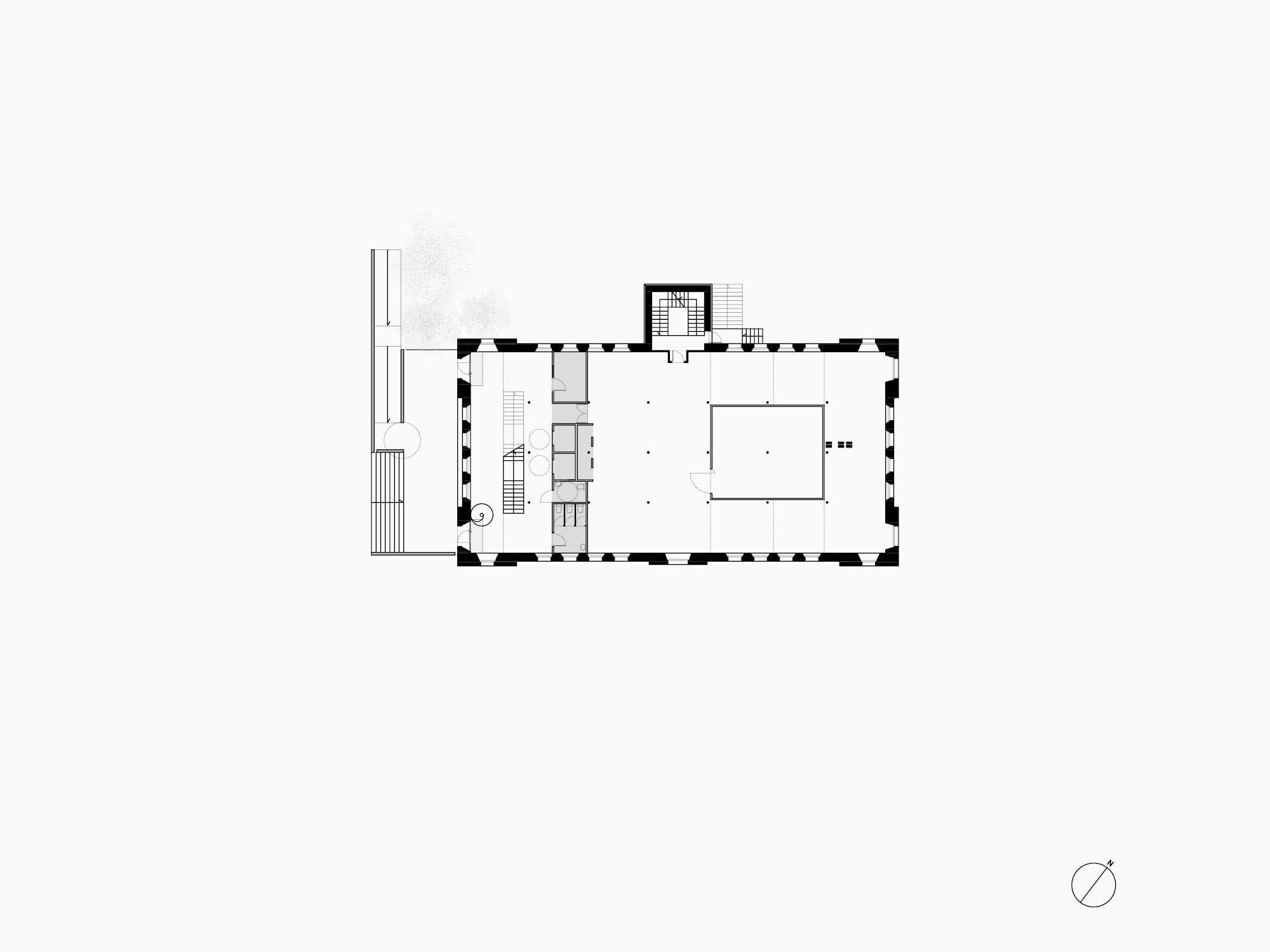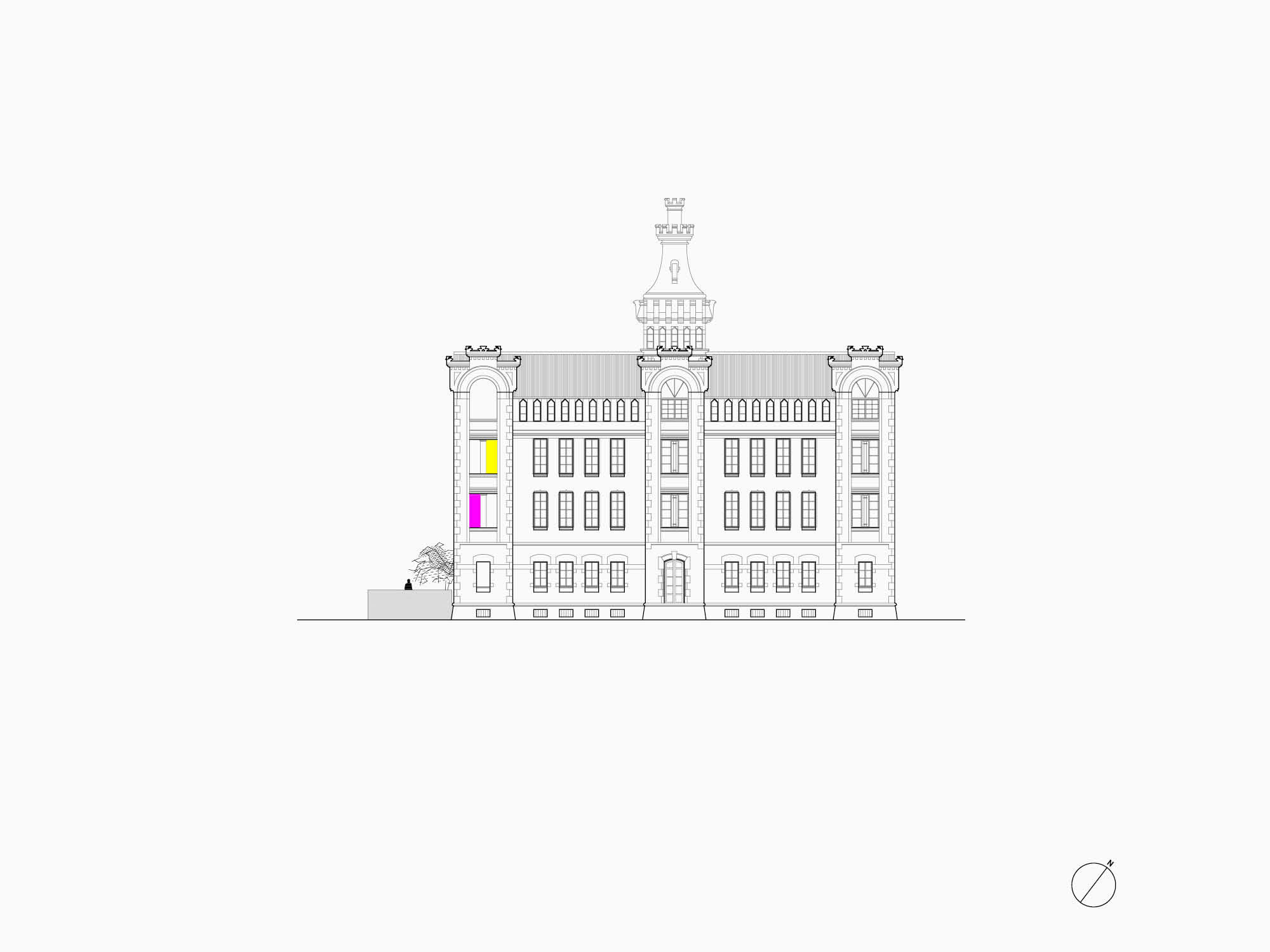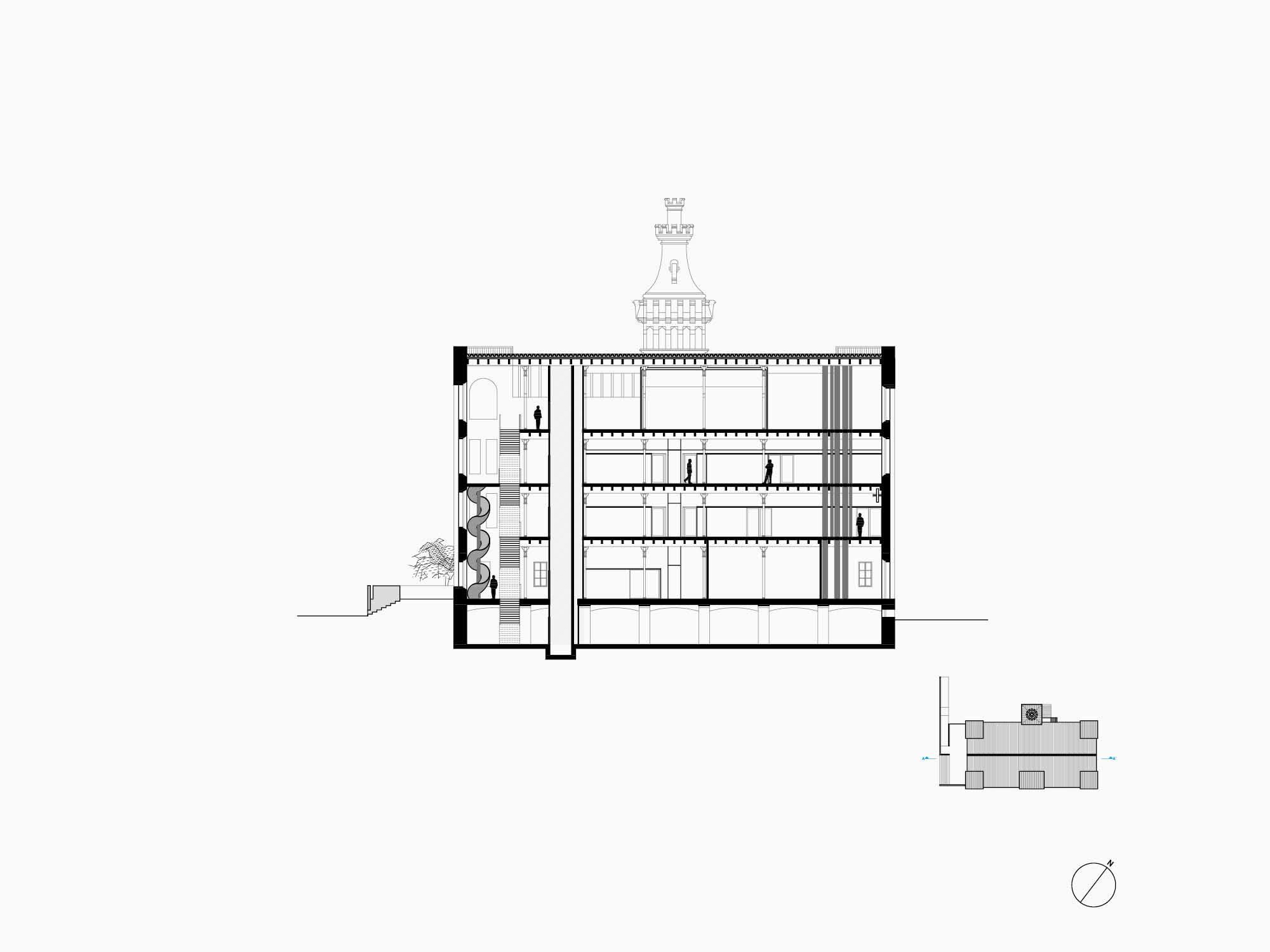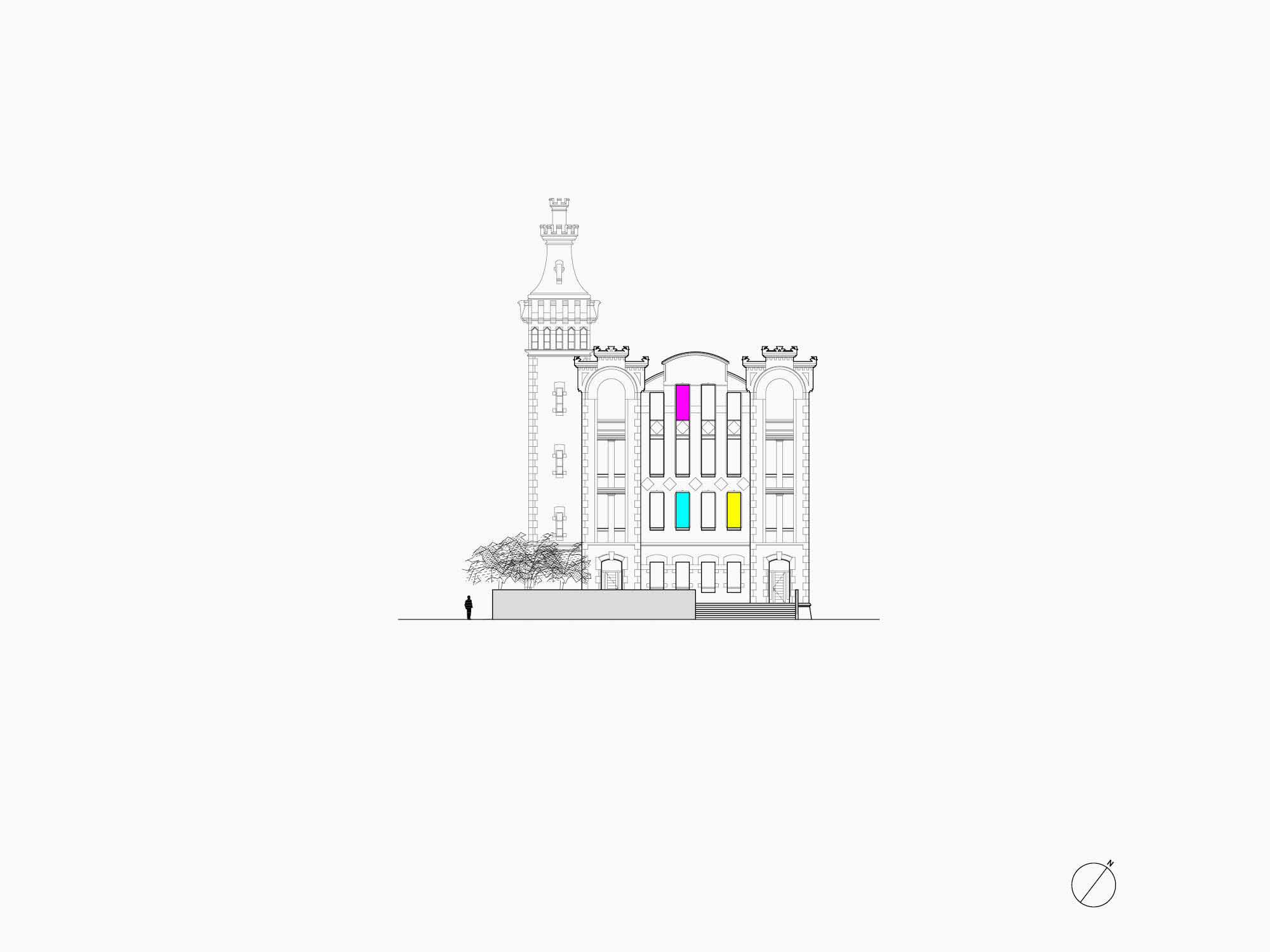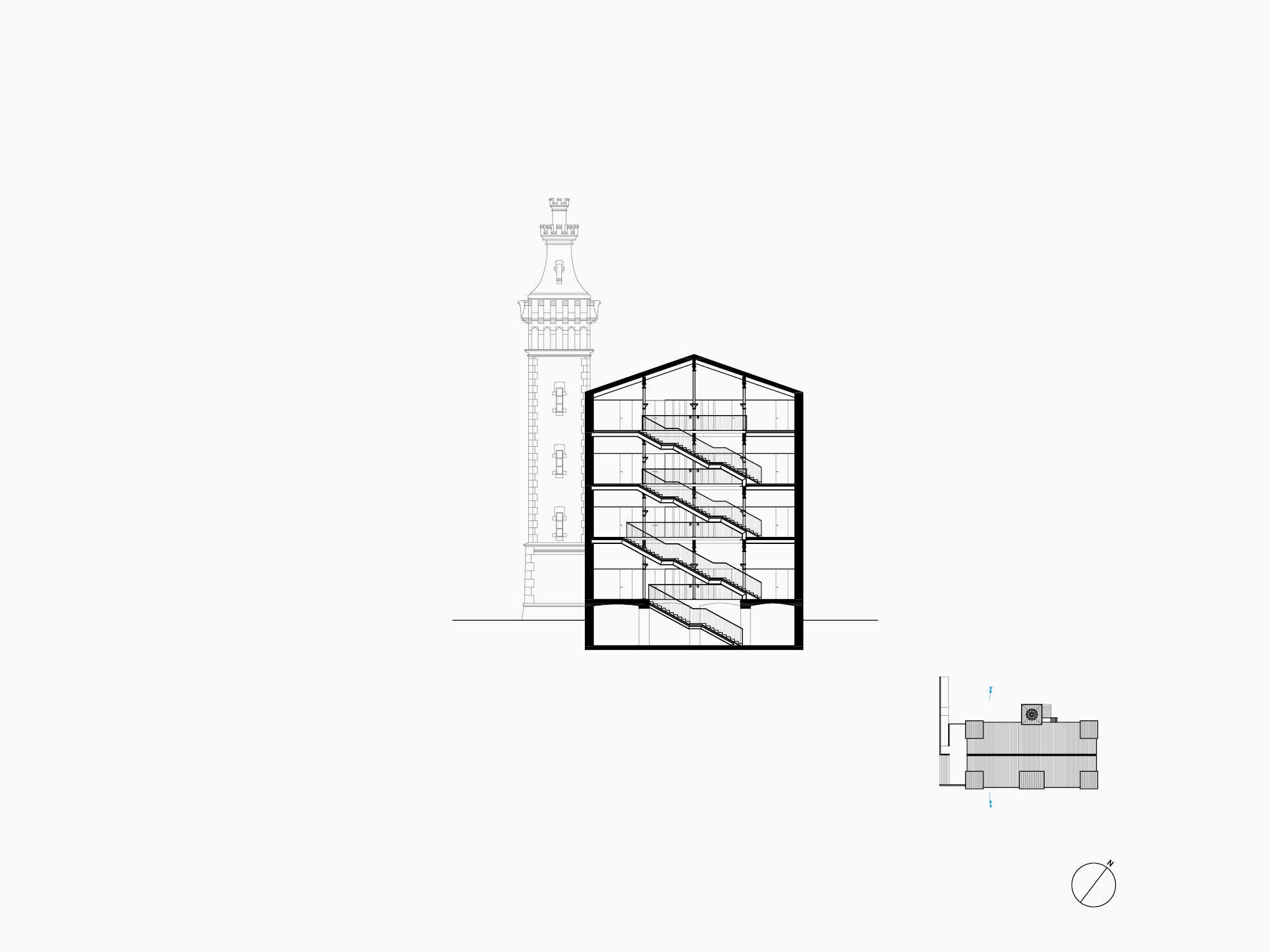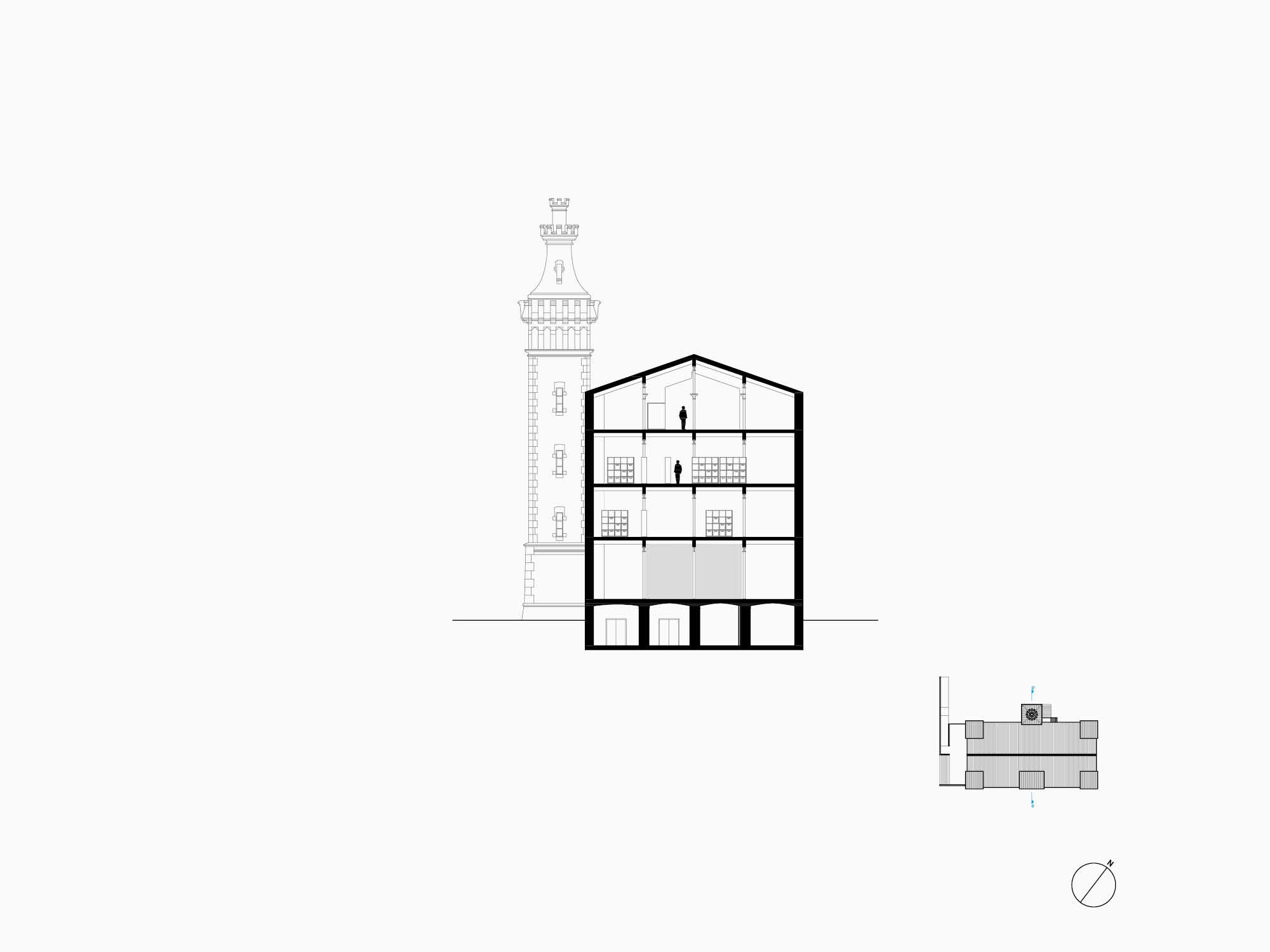Visual arts center La Farinera, Spain,
2010
La Farinera (The Flour Mill), an industrial building by the architect Enric Sagnier, was built 1896.
It is a building of simple explaination: An open floor plan of 30,70 m x 14,90 m overall dimensions with three lines of structural divisions, formed by cast-iron columns that are distribuited evenly throughout the interior of the closed rectangular space where the façade—with it’s constant rhythm—lends a classic air through the repetetive nature of its openings.
On the roof level, four elevated volumes define the upward-reaching corners as the limitation to the pitched ceramic tile roof.
A rectangular adjacent volume resolves the stair uniting the five levels that comprise the building: basement, ground floor, first, second and third (below-roof) floors.
The project proposes the creation of a nucleus of vestibules and accesses (stairs and elevators) on the far end of the space, closest to the interior of the city block. The new linear stair, in it’s transversal position, assumes the role of the primary circulation. The original stair will serve the role of complementary and emergency evacuation, with direct access to the building’s exterior.
There are two double spaces that emphasize the value of the general access hall and the vestibule that serves as a sole access to the Drawing School on the second floor.
The ground floor and the basement serve as a Center for the Art. In addition, the ground floor houses the offices of the Center for the Arts, of the Drawing School and of the Cultural Registry of the City Government of Vic.
The interior spaces are distribuited, with the idea of ease of modification, are formed in accordance with the “role models” established through the abstract and a universal order prescribed by the existing columns.
The exterior platform, a linear stair and a ramp all enable access at the level of +1.50m above the physical (exterior) ground level. This slight change in elevation allows both the ventilation and ilumination of the basement (underground) level of the building.
It is a building of simple explaination: An open floor plan of 30,70 m x 14,90 m overall dimensions with three lines of structural divisions, formed by cast-iron columns that are distribuited evenly throughout the interior of the closed rectangular space where the façade—with it’s constant rhythm—lends a classic air through the repetetive nature of its openings.
On the roof level, four elevated volumes define the upward-reaching corners as the limitation to the pitched ceramic tile roof.
A rectangular adjacent volume resolves the stair uniting the five levels that comprise the building: basement, ground floor, first, second and third (below-roof) floors.
The project proposes the creation of a nucleus of vestibules and accesses (stairs and elevators) on the far end of the space, closest to the interior of the city block. The new linear stair, in it’s transversal position, assumes the role of the primary circulation. The original stair will serve the role of complementary and emergency evacuation, with direct access to the building’s exterior.
There are two double spaces that emphasize the value of the general access hall and the vestibule that serves as a sole access to the Drawing School on the second floor.
The ground floor and the basement serve as a Center for the Art. In addition, the ground floor houses the offices of the Center for the Arts, of the Drawing School and of the Cultural Registry of the City Government of Vic.
The interior spaces are distribuited, with the idea of ease of modification, are formed in accordance with the “role models” established through the abstract and a universal order prescribed by the existing columns.
The exterior platform, a linear stair and a ramp all enable access at the level of +1.50m above the physical (exterior) ground level. This slight change in elevation allows both the ventilation and ilumination of the basement (underground) level of the building.
Location
Carrer Bisbe Morgades, 15
08500 Vic
Carrer Bisbe Morgades, 15
08500 Vic
Promoter
Ajuntament de Vic
Ajuntament de Vic
Area
2736 + 2600 m²
2736 + 2600 m²
Year of the project
2008
2008
Start of construction
2009
2009
End of construction
2010
2010
Photographs
© Adrià Goula
© Adrià Goula
